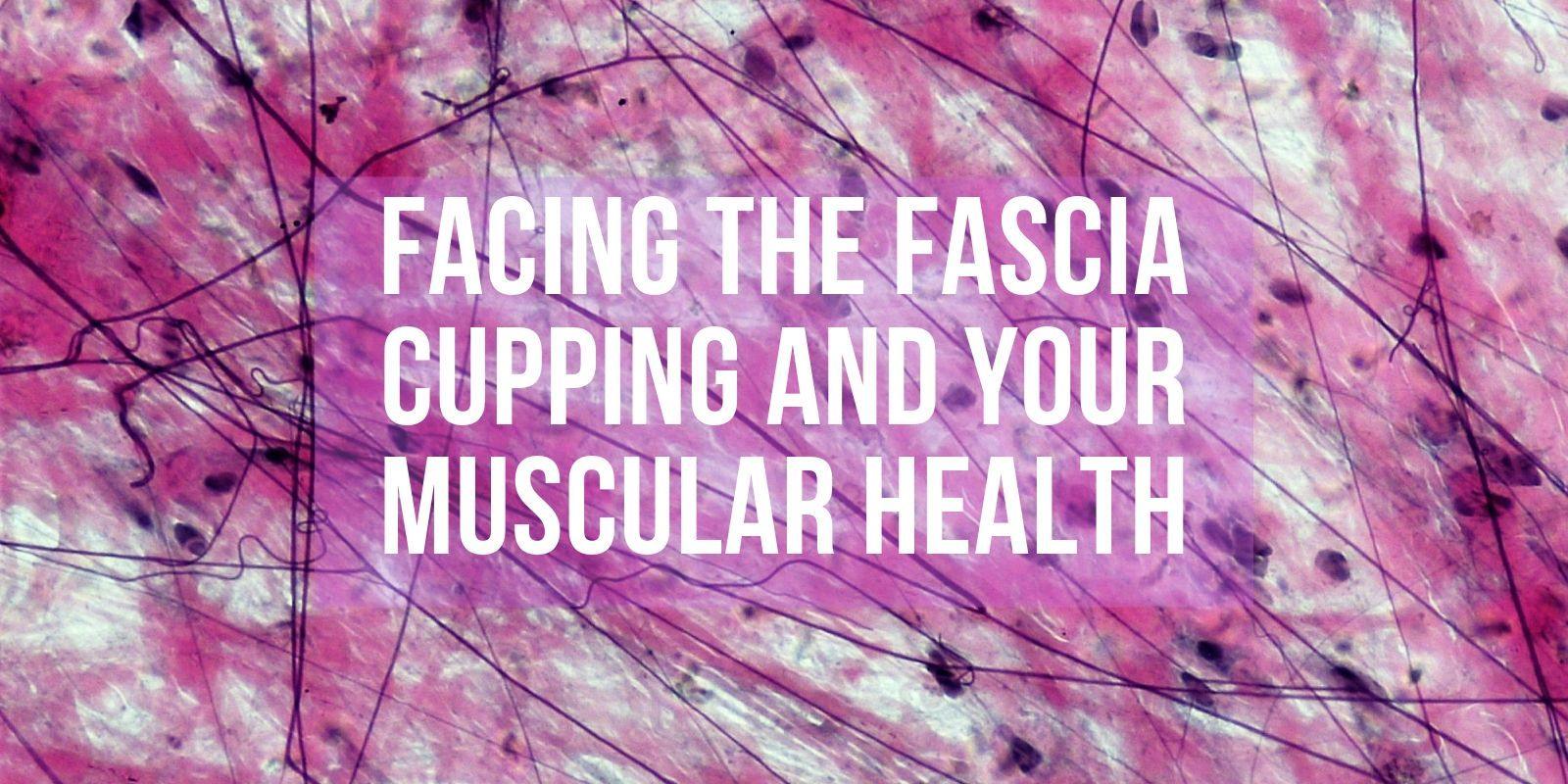Until recently, the term ‘fascia’—when paired with muscular health—didn’t get a lot of attention. Not much was known about the vast, fibrous network that holds us together, and the body’s composition was mainly discussed in terms of the more common major players: skin, muscles, organs, and bone. But the fascia is a crucial element in our overall health and one that still may not be fully understood. It’s also one of the major areas of the body that cupping therapy can help treat, heal, and keep healthy.
So what is the fascia?

Why is it such an important element in our health? Let’s go back to the major players we mentioned above: muscles, organs, bone. All of those things need to be held in place in order for us to function properly, and that’s where the fascia comes in. Simply put, the fascia acts as a kind of ‘cling wrap’ for the body’s internal structures—even more specifically, think about a layer of cling wrap lying on top of a thin cushion of water, allowing it to remain smooth and supple and move freely. The fascia is a tight-knit layer of connective tissue that forms a flexible but protective net around our muscles and internal organs. Its composition is mostly collagen, which may be a bit more familiar, as collagen is also responsible for keeping our skin, hair, and nails looking young and healthy. Most of us also know that when collagen breaks down, so can our healthy appearance. Similarly, if the fascia is injured or damaged it can spell all kinds of trouble for our muscular health.
One of the biggest problems with damaging the fascia is that injury in one area of the body can mean significant problems for another. A minor untreated injury to the shoulder, for example, may turn into unexplained pain in the back later on down the line. Just like cling wrap, a tear or weak spot in one area of the fascia can cause problems elsewhere. When you think of the fascia as a single unit, it’s easy to see how damage can have spreading and long-term effects.

Since the fascia has long been a bit of a forgotten element of the body, many people often misidentify fascia problems as actual muscle injuries, which is an easy mistake to make—both can manifest with pain, stiffness, and inflammation. Similarly, muscle tightness, stiff joints, and other common aches and pains may be symptoms of an unhealthy fascia rather than muscle issues. Fortunately, the unique dynamics of cupping therapy make it the perfect way to treat a variety of fascia issues.
Cupping and the Fascia
What is it about cupping that makes it such an ideal treatment for the fascia? Going back to our cling wrap example, let’s continue to imagine that the cling wrap is floating on a layer of water over our entire bodies. The fluid makes it easy for the cling wrap to remain smooth and supple, acting as a cushion for our muscles. Now let’s imagine that a portion of the cling wrap becomes dry and adheres to the muscle underneath it, preventing smooth movements. Injuries or stress that cause the fascia to become ‘stuck’ to the muscles beneath are common roots of pain and stiffness. People may complain of a knot or a particularly tight spot on the body that is the direct result of fascial adhesion. The vacuum effect of cupping is the perfect way to gently unstick the fascia from the skin and muscle layers and allow blood and fluids to flow freely once more.
When the fascia is gently separated from the layers around it you will feel an immediate release in pain and tension in the muscle, which is one of the reasons athletes are such big advocates of cupping therapy. The suction/massage doesn’t just feel good, it’s effective at targeting fascial adhesions, breaking them up, and helping them heal. Knots are not usually a surface issue, they go deeper, and cupping therapy is a great way to get into deep tissue layers and help release them. With ordinary massage, there is no release and no separation of the many layers comprising the skin, muscles, and fascia. Cupping allows you to pinpoint areas of pain and start healing from the inside out. At the same time, the cups help draw toxins from the area, promote draining of the lymphatic system, and help encourage healthy circulation.

So how can at-home cupping help you get your fascia back into shape? Body cupping systems, such as the Zen Body Cupping Therapy Set, the Sculpt Anti-Cellulite Cupping Set, or the Edge Advanced Body Cupping Systems are all a great place to start. These systems target larger area of the body with gentle suction to break up fascial adhesions and allow for smooth, painless motion to return. Whether you’re an athlete looking for a quicker recovery time, or you’re just dealing with everyday aches and pains, showing your fascia some love can go a long way toward feeling better.






